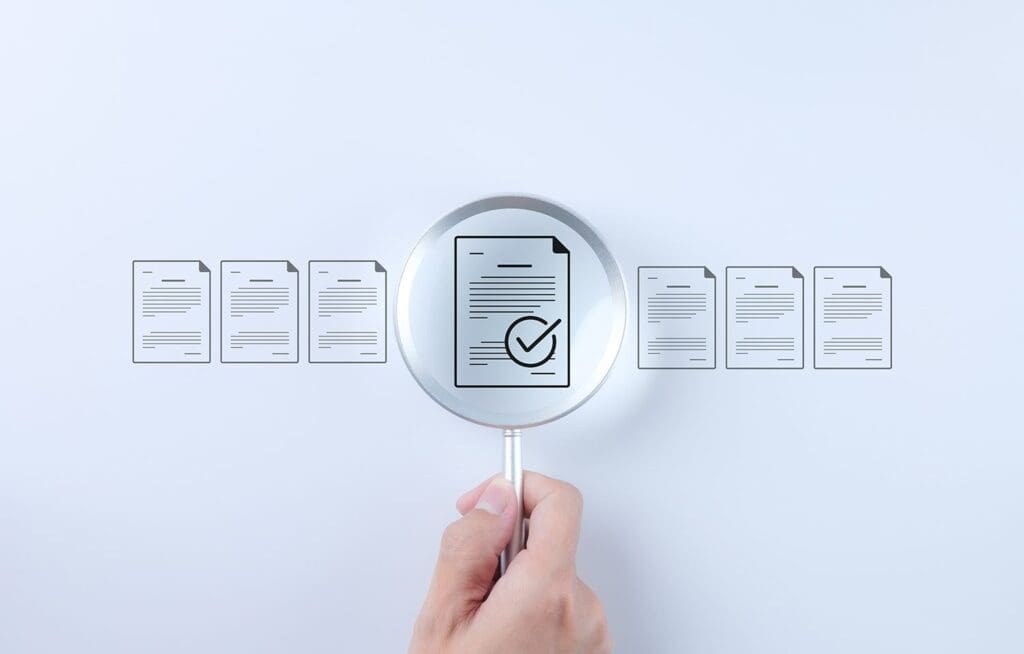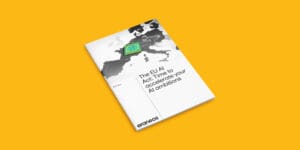As organizations face increasingly complex regulatory landscapes, ensuring compliance while maintaining operational efficiency has never been more challenging. Regulations such as GDPR, CSRD, and DORA create a dynamic compliance landscape, requiring businesses to adapt swiftly to evolving requirements. AI-powered solutions are helping businesses navigate complex compliance requirements by automating document management and streamlining processes to meet regulatory demands. One such solution is our AI-powered Document Compliance Assistant, which simplifies the maintenance of up-to-date, accurate, and compliant documentation.
The Challenge: Bridging the gap between existing and new documentation
In any regulated industry, organizations are required to maintain vast amounts of documentation to comply with laws, internal policies, and industry standards. What is more, these documents keep increasing in volume and complexity. Businesses often find themselves managing two types of documentation:
- Existing documentation (including policies, documents, and processes): These are the evolving, day-to-day operational rules and guidelines that are continually updated. They can include things like memos, chat logs, interview transcripts, and configuration files. While these documents are essential for guiding current operations, they often lack structure and formal consistency.
- New documentation (which might also require an update of the existing documentation, policy or processes): These are the rigid, official documents required for compliance, such as contracts, policies, certifications, and audit reports. These documents are often based on templates and are periodically updated to meet regulatory requirements, but the process can be cumbersome and inefficient.
The challenge lies in bridging the gap between these two types – ensuring that real-time operational insights are effectively reflected in structured compliance documentation while also making sure that business processes align with both, reducing inefficiencies, errors, and regulatory risks.
How AI can help bridge the gap
An AI-powered document compliance assistant can act as the critical link between the two types of documents. By continuously translating operational insights into structured materials, AI helps maintain a seamless flow of compliant documentation. AI can also help ensuring that business processes align with both regulatory standards and internal guidelines – reducing manual effort and mitigating compliance risks. Below, we’ve outlined five specific use cases of document compliance with the use of AI.
- Automating Document Generation – AI can automate the process of generating formal documents from informal sources. By analyzing unstructured data – such as emails, memos, and meeting notes – AI can create well-structured, compliant reports, policies, and contracts. This eliminates the time-consuming task of manually drafting documents from scratch, while also ensuring that the content aligns with current regulations. For example, when informal guidelines are iterated upon by different teams, AI can translate those updates into formal documentation, making sure that all necessary stakeholders are aligned and compliance standards are met.
- Continuous Document Review – One of the biggest challenges in compliance is ensuring that documents remain up-to-date and accurate. Regulations are continuously evolving, and what was compliant yesterday may no longer meet today’s standards. AI can automate the review process, scanning through both formal and informal documents to detect inconsistencies or outdated information. For instance, AI can compare new informal memos or operational updates with existing formal policies and flag discrepancies that need to be addressed. By doing this, AI helps ensure that all documents – whether formal or informal – remain in sync with the latest regulatory changes.
- Real-Time Regulatory Updates – Staying compliant with new regulations is crucial, but manually tracking regulatory changes is a time-consuming task. AI can help organizations stay ahead of these changes by monitoring and analyzing new regulatory updates in real-time. The AI-powered assistant can scan regulatory bodies and instantly highlight relevant updates or changes that may impact the business’s compliance documents. For example, AI can monitor the introduction of new policies under regulations like GDPR, DORA or CSRD and flag any sections of a company’s existing documentation that needs to be updated. By automating this process, organizations ensure they are always aligned with the latest legal requirements, without relying on manual updates.
- Improving Accuracy and Reducing Human Error – Manual documentation and review processes are prone to human error, whether it’s overlooking key compliance points or misinterpreting complex regulations. AI can significantly reduce these errors by being trained on vast datasets of regulatory texts and compliance documents. This can result in increased accuracy and greater confidence that all compliance documentation is aligned with internal policies and external regulations. AI can also detect potential compliance violations or gaps in the documentation, offering recommendations for improvement.
- Enhanced Compliance Reporting – In industries like finance, healthcare, and manufacturing, timely and accurate compliance reporting is essential. AI can assist in generating compliance reports by pulling the necessary data from both informal and formal documentation and compiling it into comprehensive, accurate reports that meet regulatory standards. For example, AI can extract data from operational logs, memos, and internal documentation to generate the necessary sustainability or ESG (Environmental, Social, and Governance) reports. This automated reporting not only saves time but also ensures that reports are consistent and error-free, improving the quality of submissions to regulatory authorities.
AI can support regulatory compliance.
Discover how our intelligent AI solutions help your organization automate documentation, stay compliant, and translate complex regulations into clear, actionable steps.

The Future of Document Compliance with AI
AI is transforming the way organizations approach document compliance. By automating the generation, review, and updating of compliance documents, businesses can ensure they are always aligned with the latest regulatory requirements while improving efficiency and accuracy.
The AI-powered document compliance assistant is poised to become an essential tool for businesses seeking to navigate the complexities of the regulatory landscape. By bridging the gap between existing and new documentation, AI offers a seamless solution that keeps compliance workflows efficient and up-to-date.
As businesses face increasing pressure to meet regulatory standards while staying agile, adopting AI-powered compliance solutions is no longer just an option – it’s a strategic imperative. Organizations that leverage AI for document compliance can reduce costs, mitigate risk, and focus on driving business growth without being bogged down by the complexities of regulatory compliance.




